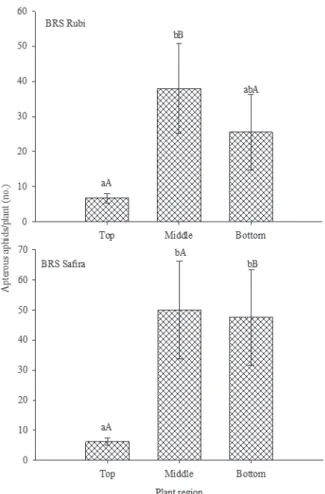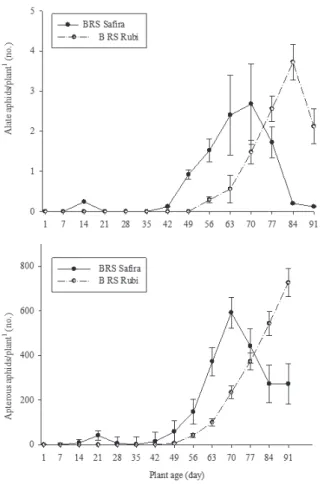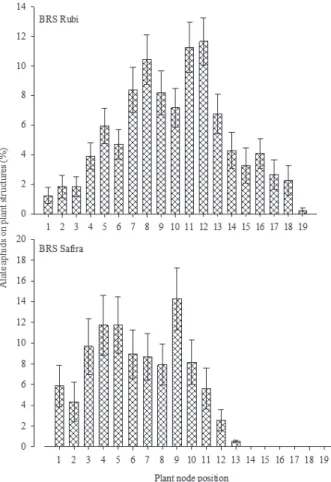Within-plant distribution of cotton aphid (Hemiptera: Aphididae) in cotton cultivars with colored fibers
Texto
Imagem




Documentos relacionados
Resumo A presente dissertação tem como objetivo explorar novos paradigmas para Serious Games em interface tangível, com vista a promover a aprendizagem não formal das ciências
the aqueous extract of juazeiro ( Ziziphus joazeiro ) leaves in the control of the red spider mite, Tetranychus ludeni , on cotton plant.. ludeni adult females were put on
No differences between the plant parts of the squares with feeding punctures were observed 70 DAE in the cultivars NuOPAL and FMX-910, while the greatest number of squares
Este estudo teve como objetivo comparar os efeitos de dois programas de treino na aptidão muscular (força e resistência muscular), aplicados durante as aulas de
A partir daí, o próprio sistema ia buscar à base de dados dos Serviços Partilhados do Ministério da Saúde (SPMS) as informações da receita – o utente, o médico prescritor,
Sampling stink bugs (Hemiptera: Pentatomidae) for population estimation and pest management in southeastern cotton production. REAY-JONES FPF, TOEWS MD, GREENE JK AND
This paper describes the development of cotton cultivars BRS 430 B2RF and BRS 432 B2RF as part of an ongoing effort to create new cotton lines and cultivars with improved
The most frequent insect pests associated with the cotton ( Gossypium hirsutum ) crop residues were Bemisia tabaci , Aphis gossypii , Frankliniella schultzei , and
